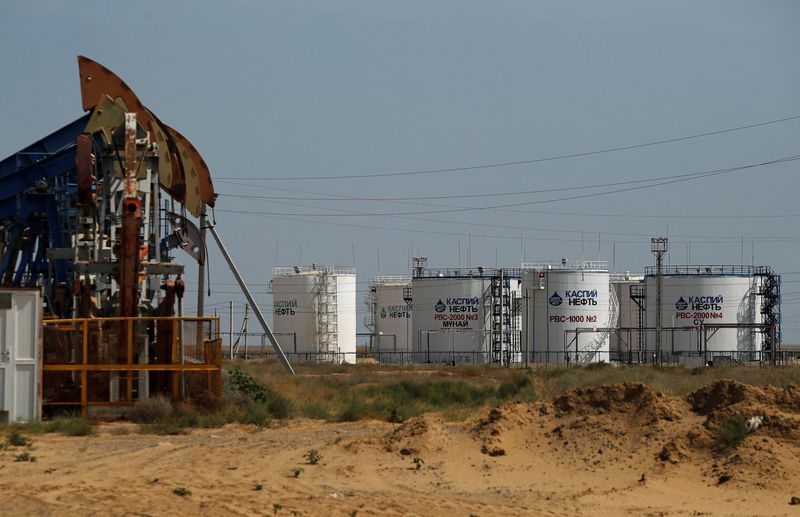Oil rises 3% as storm batters US Gulf of Mexico production
By Shariq Khan
NEW YORK (Reuters) -Oil prices rose about 3% on Thursday as producers assessed the damage to output in the U.S. Gulf of Mexico after Hurricane Francine tore through offshore oil producing areas before being downgraded to a tropical storm.
UBS analysts estimated as much as 1.5 million barrels of Gulf of Mexico output was disrupted by the storm, which was churning over southern Mississippi early on Thursday.
U.S. West Texas Intermediate crude futures were up by $1.91, or 2.8%, to $69.22 per barrel by 1:09 p.m. EDT (1709 GMT). Brent crude futures rose by $1.70, or 2.4%, to $72.31 per barrel.
Both contracts had gained more than 2% on Wednesday as companies evacuated more than 171 offshore platforms due to Francine. The disruptions are estimated to have reduced output this month from the Gulf of Mexico by around 50,000 barrels per day, UBS analysts said.
Some analysts, however, cautioned that Francine's impact could be short-lived, as it lost intensity quickly after making landfall in Louisiana on Wednesday evening. That could sway the oil market's attention back to a lack of global demand, Alex Hodes, an analyst at StoneX, told clients in a note.
Oil and fuel export ports from south to central Texas had already reopened on Thursday and refineries were also ramping up.
Concerns about weak global oil demand, particularly from top importer China, have weighed heavily on prices in recent months. Brent crude futures settled at near a three-year low on Tuesday after the OPEC+ producer group slashed its annual demand growth forecasts for the second month in a row.
The International Energy Agency on Thursday lowered its 2024 demand growth forecasts by more than 7% to 900,000 bpd, citing weak demand in China and feeble growth in other regions.
The U.S., the top consumer of oil, is also flashing signs of weak demand. Oil stockpiles rose in the country last week as crude imports grew, exports dipped, and fuel demand slumped, data from the Energy Information Administration (EIA) showed on Wednesday.
U.S. gasoline prices are trending towards a three-year low because of weak demand and abundant supplies, analysts said. U.S. gasoline consumption represents nearly 9% of global oil demand.
Source: Investing.com
